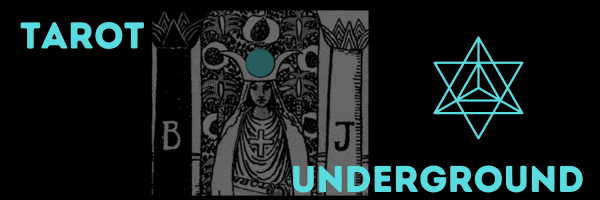Tips for Decoding the Major Arcana
With the minor arcana (wands, cups, swords and pentacles) I advise ignoring “standard definitions” and creating your own set of definitions first. Why? because Tarot wasn’t inherently created with a set of definitions. There are no true meanings.
The major arcana cards are a little different.
While these cards weren’t created and attached to a specific set of definitions or meanings, they do represent a body of knowledge.
The most common thing you will hear about the major arcana is that they are archetypes.
I really struggled with the concept of an archetype in my younger years. I’m not really sure why. Hopefully the explanations that follow will help you.
|
|
Some examples of archetypes are:
- The Mother
- The Father
- The Hero
- The Vampire
- The Outcast
- The Iconoclast
Coincidentally, most of the major arcana titles are “the” something, suggesting that they are archetypal in nature.
Just seeing the majors through the lens of archetypes can be helpful.
Once you start down the archetypal path, many rabbit holes await.
Tip #1 for understanding the Major Arcana
|
AI generated High Priestess |
Go through each of the major arcana cards and decide what archetype or archetypes the card represents. See if you can add another 2 or 3 to the list along with the card title.
For example the Emperor. The Emperor is the Emperor, but could also encompass, the father, the builder, the authority figure.
Or the Fool. The Fool is the the fool, the wanderer, the seeker, the naive one.
When you hit a card like the Tower or Judgement, you will have to ask yourself what archetypal situation is the card representing.
What we call “life changes” are often archetypal situations: getting married, having a baby, getting promoted, losing a loved one etc.
Using the title of the card is less useful for the archetypal situation cards.
For example, Justice is pretty straight forward, while Temperance and the Hanged Man are more tricky. I have a theory around that, but I will save that for a later post.
Do the best you can with the archetypal situations and see what you can glean from the cards.
As always, look at different decks to see how the major arcana are represented. Different decks will emphasize different elements.
Tip #2
Go ahead and do some research to see what others are saying about the majors as a body of work.
Some of the commentary you will probably encounter includes the Fools Journey, which is based on Jungian archetypes and the psyche. But there are others. What else can you find?
Kabbalah is another body of knowledge commonly connected to the major arcana of the Tarot.
I recommend this YouTube video on the 21 faces of God. There are also shorter excerpts of it available on the channel page.
Tip #3
Do some creative visualization/guided meditation around the major arcana of the Tarot. There’s a fair amount out there, but I particularly like these. There are a handful to Tarot cards in this list.
In summary, the major arcana of the Tarot deserve a bit of study to be understood. Archetypes are probably the best place to start. My advice is to go slowly and deepen your knowledge over time.
You can take an academic approach, a spiritual approach, a psychological approach or any approach that attracts your interest.
A more direct approach is to ask the cards directly as suggested by the active imagination exercises.
Try some of these options out and let me know how it goes for you.
